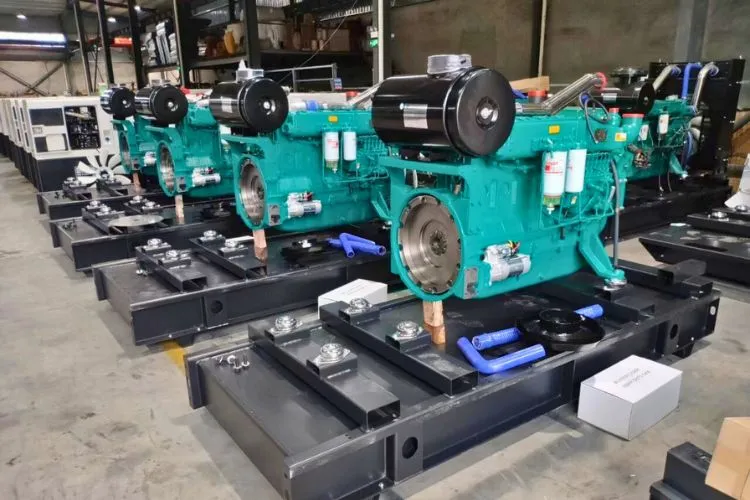Understanding your generator voltage is critical for ensuring the safety and efficiency of your power equipment.
Whether you are a homeowner relying on a generator during outages or a professional managing work-site power needs, accurate knowledge of your generator’s voltage is essential.
This guide provides a detailed approach on how to determine your generator voltage.

What You Need to Know About Generator Voltage?
Generator voltage refers to the electrical potential that the generator produces to power your appliances and devices.
It is crucial because it must match the voltage requirement of your electric grid and the appliances you intend to power.

Typically, generators produce either a single-phase or three-phase electrical output. Knowing which one your generator provides is the starting point to understanding its voltage.
Tools Required for Measuring Generator Voltage
Before you can measure your generator’s voltage, you need a reliable digital multimeter and the right personal safety equipment. These tools ensure that you can carry out the test safely and obtain the data you need.
How To Determine Your Generator Voltage?
Here’s a detailed walk-through of the process of measuring your generator’s voltage:
Safety First
Safety is paramount when handling electrical equipment. Before beginning, disconnect the generator from any load and turn it off.
Wear insulated gloves and eye protection, and ensure you are standing on a dry surface to prevent the risk of electric shock.
Preparation
Prepare your multimeter by setting it to the correct voltage range. If you’re unsure whether your generator is single-phase or three-phase, assign it to the higher possible range to prevent multimeter damage.
Voltage Measurement Procedures
Switch on the generator and let it warm up to its operating temperature. Once stabilized, attach the multimeter probes to the generator output terminals—red to positive and black to negative.
Observe the multimeter reading cautiously—it should stabilize within a few seconds, showing the generator’s voltage accurately.
Recording Your Measurements
The numbers on the multimeter represent your generator’s voltage. It’s wise to note down these readings. This information is helpful for future reference and when troubleshooting any power issues.
Factors Affecting Generator Voltage Output
Several elements can influence your generator’s voltage output. The generator’s load capacity, size, and type play a role. Environmental conditions like temperature and altitude can also affect voltage production.
Troubleshooting Common Generator Voltage Issues
If your voltage measurement seems off, consider a few common issues. Investigate the generator’s fuel supply, air filters, and look for any loose wires or corroded terminals. Maintaining these parts can help solve some common voltage problems.
Pro Tips
Developing a habit to regularly maintain your generator will help preserve its accurate voltage outputs.
Always consult your generator’s manual for manufacturer-specific instructions regarding voltage detection and other maintenance operations.
By aiming for simplicity and clarity, this article ensures that the content is easy to understand and apply.
Maintaining a professional tone throughout, it serves as a step-by-step tutorial for determining generator voltage, providing helpful knowledge without unnecessary complexity.
Guidelines on Warming Up Your Generator
To ensure accurate voltage readings and optimal performance, it’s important to properly warm up your generator. Start by switching on your generator with no load connected.

Allow it to run at idle speed for a period recommended by the manufacturer, typically 3-5 minutes. This step ensures that the engine’s temperature stabilizes and that lubricant is adequately distributed throughout the engine components.
How Warm-Up Affects Voltage Readings?
A proper warm-up phase allows the generator’s engine to reach operational efficiency, which can be critical for maintaining a stable voltage output.
If you measure voltage without warming up the generator, the readings might reflect transient conditions rather than the stable operating state.
This can lead to incorrect assumptions about your generator’s performance and might even cause misuse if the generator’s voltage is adjusted based on these inaccurate readings.
Always follow the warm-up procedure to ensure your generator delivers reliable and consistent voltage when you need it.
Frequently Asked Questions (FAQs)
How can I tell if my generator is providing the correct voltage for my appliances?
To ensure your generator is providing the correct voltage, use a digital multimeter to measure the output directly from the generator’s outlets. Compare this reading to the voltage requirements stated on your appliances. The generator’s voltage should match or be within acceptable operational tolerances of your appliances’ rated voltage.
What should I do if my generator voltage fluctuates significantly when in use?
Voltage fluctuations can be a sign of an overloaded generator, a malfunctioning voltage regulator, or a faulty generator component. Reducing the load on the generator may stabilize the voltage. If the problem persists, consult your generator’s manual or a professional technician for further diagnosis and repair.
Is it possible to measure generator voltage without using a multimeter?
While a multimeter is the most accurate tool for measuring voltage, alternative methods exist but are less reliable. For instance, utilizing a voltage tester or observing the functioning of your appliances can provide a rough indication of voltage. However, for precision and safety, a multimeter is strongly recommended.
Can changes in the environment affect my generator’s voltage output?
Yes, environmental conditions such as temperature, altitude, and humidity can impact your generator’s performance and voltage output. High altitudes can reduce engine performance, and extreme temperatures can cause fluctuations in voltage regulation. Always consider these factors when operating your generator.
My generator is producing too low a voltage; what could be the reason?
Low voltage output can result from various issues, including a malfunctioning alternator, a worn-out engine, or voltage regulator problems. It’s also wise to check whether the generator’s air filter is clean and that it has an adequate fuel supply. If these measures don’t resolve the issue, it may be time to seek professional help.
Conclusion:
Measuring your generator voltage is an essential skill for ensuring your generator operates safely and effectively.
With the provided steps, you should feel confident in performing this task.
Remember to adhere to safety guidelines and perform regular maintenance checks.
By following this guide, you can help ensure that your generator will serve you reliably when you need it most.
